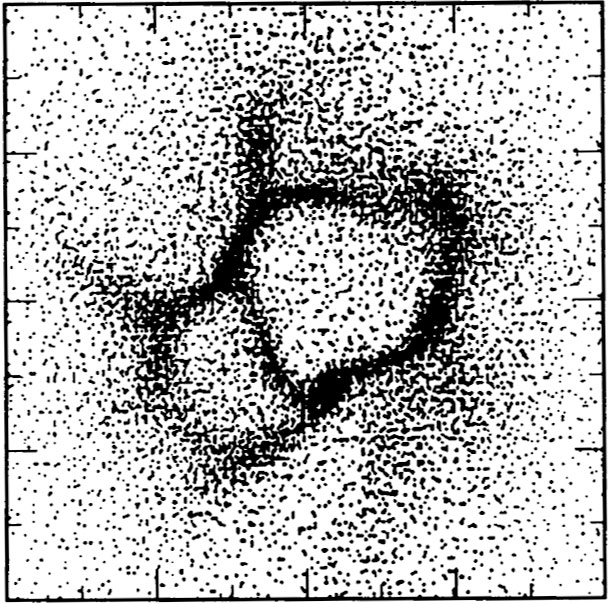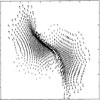- Eric Keto's Home Page
- High Mass Stars
- Starless Cores
- Extragalactic
- Radiative Transfer
- Hydrodynamics
- SMA Instrumentation
- IR Instrumentation
- MOLLIE radiative transfer
- Keto Prize
- Textbooks
| 3D Smoothed Particle Hydrodynamics | ||||
|
Abstract The process of gravitational fragmentation of molecular clouds is investigated through a comparison of numerical and observational results. The expected millimeter wave molecular line emission from a model fragmenting cloud generated by a numerical hydrodynamic simulation is calculated and compared with observations of HCO+ from the star-forming region W49A. This investigation suggests that the rotating ring of H II regions, the necklace in W49A, may have formed in the gravitational fragmentation of a flattened rotating molecular cloud. Eric R. Keto, John C. Lattanzio & Joe J. Monaghan, 1991, ApJ, 383, 639
Abstract A three-dimensional model for hydrodynamic and radiative transfer simulations of collisions between high-latitude clouds is described. The smooth particle hydrodynamics code by Lattanzio and Henriksen (1988) is used to compute the velocity and density fields in the impacted clouds along with a recently developed radiative transfer code to compute C13O line radiation from the simulated source. The model shows the following: the so far unexplained energy source for the broad CO line wings reported by Blitz, Magnani, and Wandel (1987) derives from the collisions; collisions can induce rapid gravitational collapse and star formation in these clouds which are otherwise supported against gravitational contraction via their internal energy content; and the external pressure due to intercloud H I, first proposed by Keto and Myers (1986), plays a significant role in the stability and evolution of the high-latitude clouds. Eric R. Keto & John C. Lattanzio, 1989, ApJ, 346, 184
| ||||
|
|


